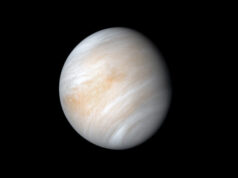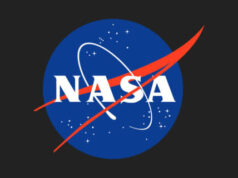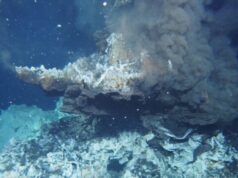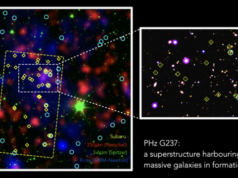An illustration to explain the dynamics of the ultra-relativistic third Van Allen radiation belt, by Andy Kale. Credit: Andy Kale
Earth’s magnetosphere, the region of space dominated by Earth’s magnetic field, protects our planet from the harsh battering of the solar wind. Like a protective shield, the magnetosphere absorbs and deflects plasma from the solar wind which originates from the Sun. When conditions are right, beautiful dancing auroral displays are generated. But when the solar wind is most violent, extreme space weather storms can create intense radiation in the Van Allen belts and drive electrical currents which can damage terrestrial electrical power grids. Earth could then be at risk for up to trillions of dollars of damage.
Announced today in Nature Physics, a new discovery led by researchers at the University of Alberta shows for the first time how the puzzling third Van Allen radiation belt is created by a “space tsunami.” Intense so-called ultra-low frequency (ULF) plasma waves, which are excited on the scale of the whole magnetosphere, transport the outer part of the belt radiation harmlessly into interplanetary space and create the previously unexplained feature of the third belt.
“Remarkably, we observed huge plasma waves,” says Ian Mann, physics professor at the University of Alberta, lead author on the study and former Canada Research Chair in Space Physics. “Rather like a space tsunami, they slosh the radiation belts around and very rapidly wash away the outer part of the belt, explaining the structure of the enigmatic third radiation belt.”
The research also points to the importance of these waves for reducing the space radiation threat to satellites during other space storms as well. “Space radiation poses a threat to the operation of the satellite infrastructure upon which our twenty-first century technological society relies,” adds Mann. “Understanding how such radiation is energized and lost is one of the biggest challenges for space research.”
Find your dream job in the space industry. Check our Space Job Board »
For the last 50 years, and since the accidental discovery of the Van Allen belts at the beginning of the space age, forecasting this space radiation has become essential to the operation of satellites and human exploration in space.
The Van Allen belts, named after their discoverer, are regions within the magnetosphere where high-energy protons and electrons are trapped by Earth’s magnetic field. Known since 1958, these regions were historically classified into two inner and outer belts. However, in 2013, NASA’s Van Allen Probes reported an unexplained third Van Allen belt that had not previously been observed. This third Van Allen belt lasted only a few weeks before it vanished, and its cause remained inexplicable.
Mann is co-investigator on the NASA Van Allen Probes mission. One of his team’s main objectives is to model the process by which plasma waves in the magnetosphere control the dynamics of the intense relativistic particles in the Van Allen belts—with one of the goals of the Van Allen Probes mission being to develop sufficient understanding to reach the point of predictability. The appearance of the third Van Allen belt, one of the first major discoveries of the Van Allen Probes era, had continued to puzzle scientists with ever increasingly complex explanation models being developed. However, the explanation announced today shows that once the effects of these huge ULF waves are included, everything falls into place.
“We have discovered a very elegant explanation for the dynamics of the third belt,” says Mann. “Our results show a remarkable simplicity in belt response once the dominant processes are accurately specified.”
Many of the services we rely on today, such as GPS and satellite-based telecommunications, are affected by radiation within the Van Allen belts. Radiation in the form of high-energy electrons, often called “satellite killer” electrons because of their threat to satellites, is a high profile focus for the International Living with a Star (ILWS) Program and international cooperation between multiple international space agencies. Recent socio-economic studies of the impact of a severe space weather storm have estimated that the cost of the overall damage and follow-on impacts on space-based and terrestrial infrastructure could be as large as high as $2 trillion USD.
Politicians are also starting to give serious consideration to the risk from space weather. The White House recently announced the implementation of a Space Weather Action Plan highlighting the importance of space weather research like this recent discovery. The action plan seeks to mitigate the effects of extreme space weather by developing specific actions targeting mitigation and promoting international collaboration.
Mann, lead author of this new study, is the chairman of an international Space Weather Expert Group operated under the auspices of the United Nations Committee on the Peaceful Uses of Outer Space (COPUOS); the Expert Group has a three-year work plan and is charged with examining and developing strategies to address the space weather threat through international cooperation. As a nation living under the auroral zone, Canada faces a much larger potential threat from space weather impacts than other countries.
Source: University of Alberta
Journal: Nature Physics
Research Reference:
- Explaining the dynamics of the ultra-relativistic third Van Allen radiation belt, Nature Physics, DOI: 10.1038/nphys3799











